I'm trying to make a box like the image shown.

But the border of my smaller box is sitting inside the bigger box, rather than sitting on top of the big boxes border.
I need to make it so the small pink "chicken" box is sitting right on top of the upper right corner of the big grey box.
<!DOCTYPE html>
<html>
<head>
<title>Coursera Assignment 1</title>
<meta charset="utf-8">
<link rel="stylesheet" type="text/css" href="css/styles.css">
<style type="text/css">
* {
box-sizing: border-box;
margin:0px;
font-family: Helvetica, Arial, sans-serif;
line-height: 1.3;
}
h2.chicken {
background-color: #D59898;
border: 2px solid black;
text-align: center;
width: 100px;
margin: 0px 10px 0px 0px;
float: right;
margin-right: 0px;
}
div.chicken {
background-color: grey;
border: 2px solid black;
width: 30%;
position: relative;
}
p.chicken {
clear: right;
padding: 10px;
}
</style>
</head>
<body>
<h1>Our Menu</h1>
<div class="chicken">
<h2 class="chicken">Chicken</h2>
<p class="chicken">Spacing: Pay attention to the spacing shown in the mockup illustrations. Note the spacing between sections (both horizontal and vertical). Note the horizontal spacing between the edges of the section and the edges of the browser window. Also, note the spacing between the dummy text in each section and the edges of the section. Lastly, make sure the dummy text is "pushed down" enough so it</p>
</div>
</body>
</html>